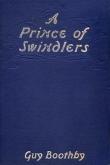AustLit
Latest Issues
AbstractHistoryArchive Description
'One of literature's first, greatest, and most dastardly gentleman rogues rise again
'The British Viceroy first meets Simon Carne while traveling in the Indian countryside. Charmed, he invites the reclusive hunchbacked scholar to London for a season of high society, little suspecting that his guest is actually an adventurer and master of disguise. Carne – aided by his loyal butler, Belton – embarks on a crime spree, stealing from London's richest citizens and then making fools of them by posing as a detective investigating the thefts.'
Source: Publisher's blurb (Penguin Classics).
Adaptations
-
form
y
 The Duchess of Wiltshire's Diamonds
( dir. Kim Mills
)
United Kingdom (UK)
:
Thames Television
ITV
,
1971
9356431
1971
single work
film/TV
crime
The Duchess of Wiltshire's Diamonds
( dir. Kim Mills
)
United Kingdom (UK)
:
Thames Television
ITV
,
1971
9356431
1971
single work
film/TV
crime
An adaptation of the first chapter of Guy Boothby's A Prince of Swindlers, in which Simon Carne first robs the aristocracy (in this case, the Duchess of Wiltshire) and then impersonates a detective investigating the crime.
Publication Details of Only Known VersionEarliest 2 Known Versions of
Works about this Work
-
Guy Boothby and the “Yellow Peril” : Representations of Chinese Immigrants in British Imperial Spaces in the Late-Nineteenth Century
2015
single work
criticism
— Appears in: Australasian Journal of Victorian Studies , vol. 20 no. 1 2015; (p. 5-23)'By the end of the nineteenth century the pernicious racial term “yellow peril” had entered the common parlance of Victorians across the British Empire. Ironically, this insidious imperial myth that China would overrun the West owed its genesis to the impact of European, and particularly British imperial activity, on China in the late-nineteenth century, rather than to any expansionary Chinese aims or activity. The western impact was bi-faceted, involving both the physical incursion of westerners into China, and the related movement of Chinese people overseas to work in western nations and colonies. Under the international coerced labour phenomenon known as the “coolie trade,” Chinese people were brought across the British Empire as far as the settler colonies of Australia and South Africa, and even to the plantations of the British West Indies. Despite the relative powerlessness of their position as indentured or indebted immigrants, they were inevitably perceived as hostile aliens who threatened "white" society. This essay examines the impact of Australian anti-Chinese sentiment on representations of Chinese people in the works of Guy Boothby, an Adelaide-born author who emigrated to London in 1893. It explores Boothby’s representations of Chinese people in the imperial spaces of Britain’s Australian and Southeast Asian colonies, and also in the informal imperial spaces of contact in “foreign” China, in the cities and coastal locations where the British Empire was making its presence and influence felt, in works including Boothby’s travelogue, On the Wallaby (1894), the Dr Nikola series of novels (1895-1901), “The Story of Lee Ping” (1895), The Beautiful White Devil (1896) and My Strangest Case (1901). It argues that these superficially disinterested but consistently derogatory representations of the far-flung Chinese contributed to the deplorable international myth of the yellow peril, but also could not help revealing the important and largely overlooked presence of the Chinese in the spaces of the British Empire, demonstrating the impact of the coolie trade on imperial society and signalling the multifaceted nature of the British Empire’s involvement with China.' (Publication summary)
-
Guy Boothby and the “Yellow Peril” : Representations of Chinese Immigrants in British Imperial Spaces in the Late-Nineteenth Century
2015
single work
criticism
— Appears in: Australasian Journal of Victorian Studies , vol. 20 no. 1 2015; (p. 5-23)'By the end of the nineteenth century the pernicious racial term “yellow peril” had entered the common parlance of Victorians across the British Empire. Ironically, this insidious imperial myth that China would overrun the West owed its genesis to the impact of European, and particularly British imperial activity, on China in the late-nineteenth century, rather than to any expansionary Chinese aims or activity. The western impact was bi-faceted, involving both the physical incursion of westerners into China, and the related movement of Chinese people overseas to work in western nations and colonies. Under the international coerced labour phenomenon known as the “coolie trade,” Chinese people were brought across the British Empire as far as the settler colonies of Australia and South Africa, and even to the plantations of the British West Indies. Despite the relative powerlessness of their position as indentured or indebted immigrants, they were inevitably perceived as hostile aliens who threatened "white" society. This essay examines the impact of Australian anti-Chinese sentiment on representations of Chinese people in the works of Guy Boothby, an Adelaide-born author who emigrated to London in 1893. It explores Boothby’s representations of Chinese people in the imperial spaces of Britain’s Australian and Southeast Asian colonies, and also in the informal imperial spaces of contact in “foreign” China, in the cities and coastal locations where the British Empire was making its presence and influence felt, in works including Boothby’s travelogue, On the Wallaby (1894), the Dr Nikola series of novels (1895-1901), “The Story of Lee Ping” (1895), The Beautiful White Devil (1896) and My Strangest Case (1901). It argues that these superficially disinterested but consistently derogatory representations of the far-flung Chinese contributed to the deplorable international myth of the yellow peril, but also could not help revealing the important and largely overlooked presence of the Chinese in the spaces of the British Empire, demonstrating the impact of the coolie trade on imperial society and signalling the multifaceted nature of the British Empire’s involvement with China.' (Publication summary)



